Northern Star Resources (ASX: NST) is transforming an iconic but previously unloved Kalgoorlie asset into Australia’s largest gold operation.
Kalgoorlie Consolidated Gold Mines (KCGM) — also known as the Super Pit — produced 437,000 oz. of gold in the 12 months to June 30 (its 2024 fiscal year), well below its 2011 peak of 730,000 ounces.
But Northern Star has plans to raise output to 900,000 oz. per year by 2029. This will make KCGM the largest gold producer in Australia and the fourth largest globally, Northern Star managing director Stuart Tonkin said during a site visit in early August.
“There will only be four other gold mines in the world [producing 900,000 ounces per year] and they’ll be in pretty exotic places and they won’t be on the doorstep of a history of a century of mining in the Kalgoorlie Goldfields,” he said.
A decade ago, KCGM was run by a 50:50 joint venture between gold majors Newmont (TSX: NGT; NYSE: NEM) and Barrick Gold (TSX: ABX; NYSE: GOLD).
Barrick sold its stake in late 2019 to Perth-based Saracen Mineral Holdings, with Northern Star offering months later to buy Newmont’s half, then Saracen itself in 2020.
The exit of the North Americans brought KCGM under Australian ownership for the first time in its 31-year history, though the asset dates back more than a century.
Barrick had previously tried — unsuccessfully — to sell its stake in the Super Pit in 2016.
A pit wall slip in May 2018, which saw about 1 million tonnes of ore fall into the bottom of the pit, led the operators to slash guidance by as much as 25%, further dampening Barrick’s enthusiasm for the asset.
At the time of the Northern Star-Saracen merger, KCGM had a remaining life of just two years and a hefty remediation bill from the wall slip.
Northern Star’s work since acquiring the asset has shown the mine has plenty of potential left, however.
It plans to increase production to more than 500,000 oz. this fiscal year, and to reach a run-rate of 650,000 oz. per year in 2026.

Northern Star’s Fimiston pit, also known as the ‘Super Pit’. (Image: Kristie Batten | MINING.COM.)
Part of that is due to the almost complete remediation of the eastern pit wall, which will unlock 1.5 million oz. of high-grade gold.
“I think what investors are going to start to appreciate is that is the keys to unlock the access to the high-grade [ore] in the pit floor, that essentially was sterilized back in 2018,” Tonkin said.
“There’s was a period of no activity, and then when Northern Star took ownership, we rapidly advanced that cutback, as well as mining the Oroya-Brownhill area, and we’re very, very close to opening up that pit floor, which is the high grade out of Golden Pike.”
Underground ore will also contribute to the production growth as Northern Star kicks off the Fimiston underground mine.
Ore from the underground mines will almost double to around 4 million tonnes in fiscal 2026 from 2 million this year.
US$1B expansion
Last June, Northern Star announced a A$1.5 billion (US$1 billion) plant expansion, which would take throughput from 13 million tonnes per year to 27 million tonnes annually.
The three-year build kicked off about a year ago with A$348 million, or 23%, of the budget being spent in fiscal 2024. The company has budgeted A$500-530 million for this fiscal year. And a new plant is being built alongside the existing facility to minimize disruptions to production.
Using a gold price of A$3,500 (US$2,300) an oz., the project has a post-tax internal rate of return of 26% and a payback period of 3.3 years.
Following a two-year ramp-up period, KCGM’s production will increase to 900,000 oz. per year at all-in sustaining costs of A$1,425 per oz.
To feed the expansion, underground ore will reach 6 million tonnes per year by fiscal 2029, while Northern Star will draw down on KCGM’s huge stockpile of 137 million tonnes at 0.7 gram gold per tonne.
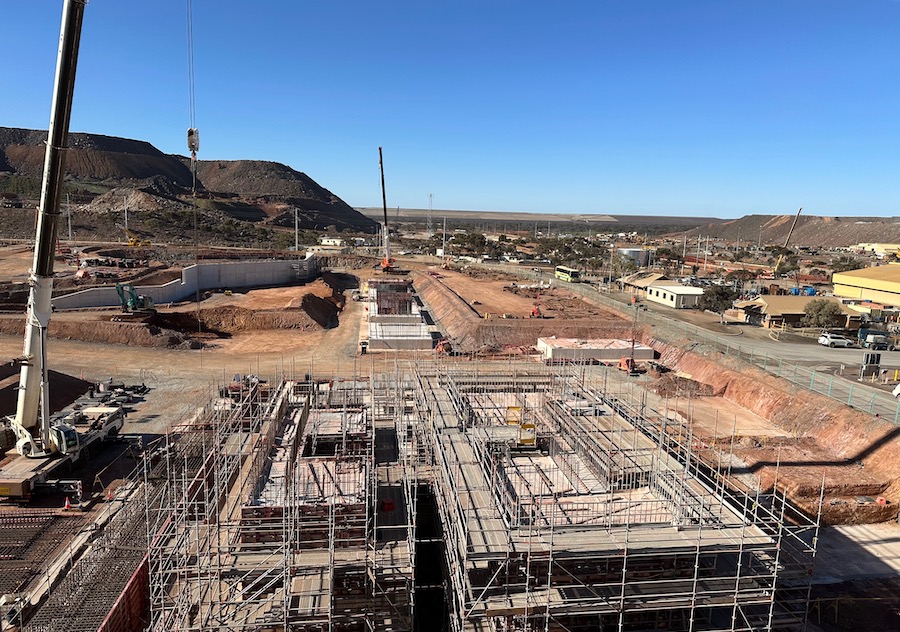
Plant expansion. Image: Kristie Batten, MINING.com
‘Golden Mile’
Kalgoorlie’s “Golden Mile” was discovered by Irish prospector Paddy Hannan in June 1893, sparking a gold rush that continues today.
According to Western Australian archives, more than 1,000 men were prospecting on the Golden Mile within a week of Hannan’s discovery. The main street of Kalgoorlie, 600km east of Perth, is named after Hannan and there is a statue in his honour.
By 1903, there were 49 mines, 100 headframes and more than 3,000 km of underground workings on the Golden Mile, and mining continued through the 20th century.
KCGM was formed in 1989 by combining the entire area into one entity and was operated by Normandy Mining and Homestake Mining Company, which were acquired by Newmont and Barrick, respectively, in the early 2000s.
The Golden Mile has produced more than 65 million oz. of gold since the lease was first pegged. The Super Pit itself is one of the world’s largest open pit mines, measuring 3.5 km long and 1.5 km wide, and can be seen from space.
New owners
Northern Star’s aggressive commitment to exploration has boosted resources by 66% since acquisition to 32 million oz. of gold and reserves by 36% to 13 million oz., a mine life of more than 20 years.
While KCGM already had one underground mine, Mt Charlotte, Northern Star has focused on the asset’s underground potential. Included in the inventory figure is 10 million oz. of underground resources and 2 million oz. of reserves.
Tonkin said underground mineralization remained open in all directions.
“We know [mineralization extends] kilometres to the south, kilometres to the north, 2 km at depth – the geology continues, so that’s what we get excited about,” he said.
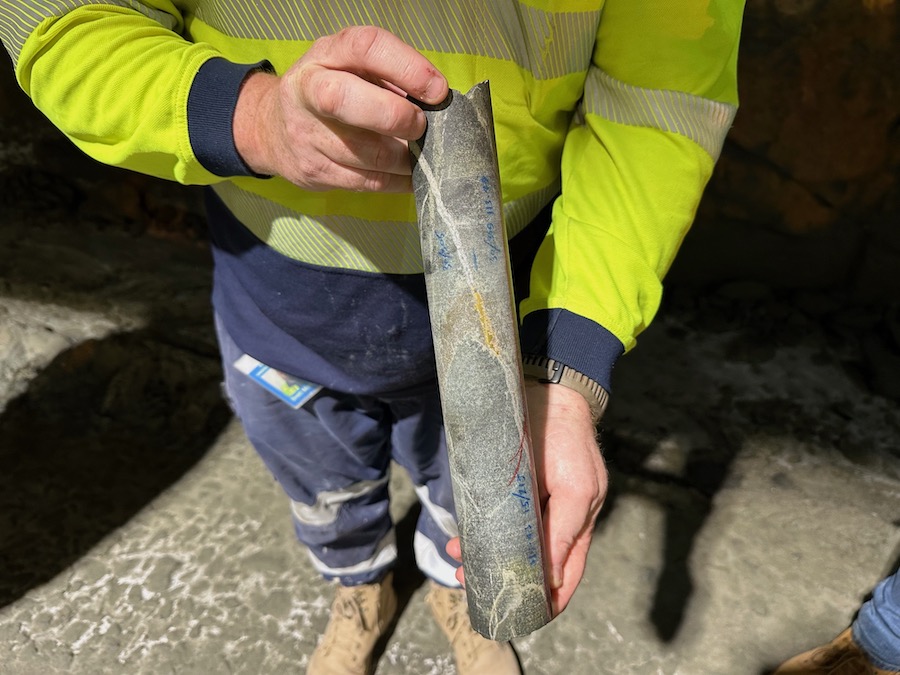
Visible gold in drill core at the Mt Charlotte underground mine. (Image: Kristie Batten | MINING.COM.)
Riding high
Gold is trading at a record high, but even in the event of a slump in the gold price, Tonkin said the expansion at KCGM would continue as it would lower unit costs.
“I think when you’re looking at comparing this to anything around the world, we’ve got a very, very, very special system with a century of history,” he said. “And we’ve given it a red-hot crack in essentially investing in it to get those returns.
“It will survive the cycles. This asset will underpin the city, but it will also survive the cycles.”
Northern Star this month reported record cash earnings of A$1.8 billion and a net profit after tax of A$639 million for fiscal 2024. That’s on production of 1.6 million oz. of gold at AISC of A$1,853 per oz. from its assets in WA and Pogo in Alaska.
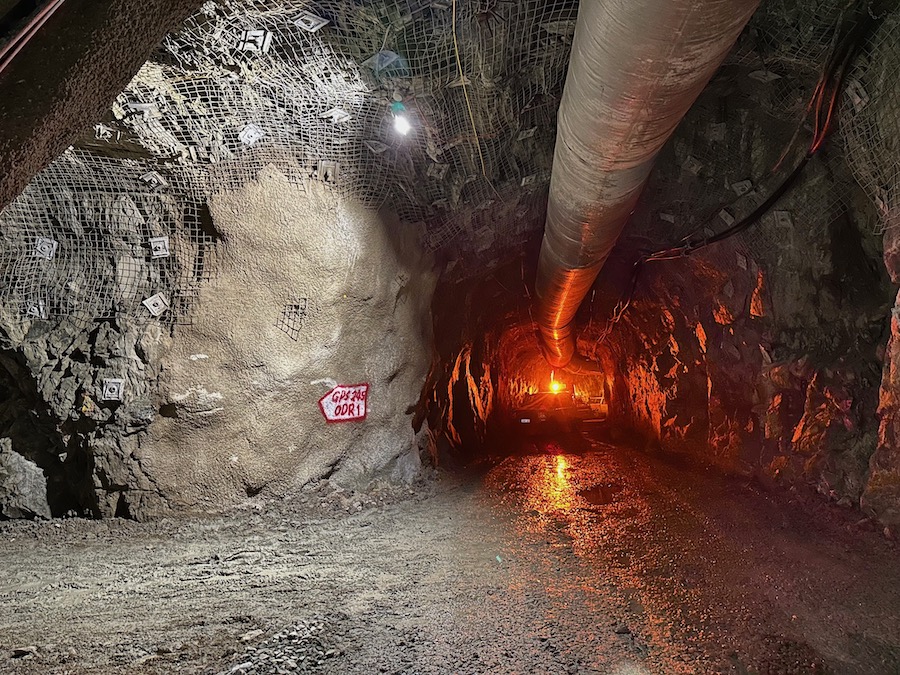
Underground at Northern Star’s Mt Charlotte mine. (Image: Kristie Batten | MINING.COM.)
The company declared a dividend of A25c per share and extended its A$300 million share buy-back for a further 12 months.
Northern Star was in a net cash position of A$358 million as of June 30 and will continue to fund the KCGM expansion from internal cash flow.
“We are in front of a multi-decade asset here from a pit and underground potential, as well as the other assets that are complemented in the portfolio,” Tonkin said. “Our confidence on this significant system is here and every year we’ve moved forward, we’ve just got more and more confidence, reaffirming why we got here in the first place.”


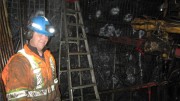

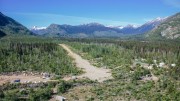

Be the first to comment on "Site visit: Northern Star to bolster ‘Super Pit’ gold output to 900,000 oz per year"